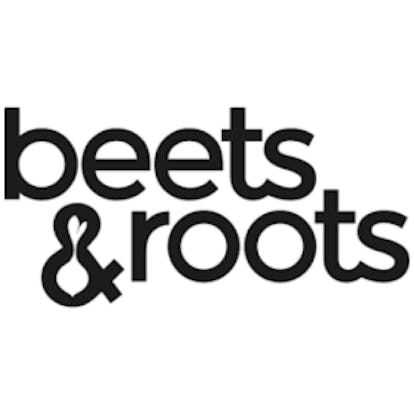What sets beets&roots apart from other healthy food brands, and how do you maintain your competitive edge?
"beets&roots has two key strengths that differentiate it from competitors.
The first is our omnichannel business model. Our goal is to generate most of our revenue outside of our restaurants by leveraging our brand, products, and production capacity across multiple sales channels. These include restaurants, delivery, B2B catering, travel locations, and retail.
This approach strengthens our brand awareness and leads to higher profitability per square meter than many of our competitors." - Maximilian Kochen
Your B2B catering business is growing rapidly – what potential do you see in this segment, and how does it impact profitability?
"There are two key reasons why B2B is an exciting opportunity for us.
First, the market tailwinds are strong:
- The labor shortage pushes companies to make their workplaces more attractive, and food is an important non-monetary benefit.
- Office managers aim to bring employees back to offices, and food serves as an effective incentive.
Second, B2B has strong unit economics. In our restaurant business, the average order value is €13-15 per customer. In B2B, the average order value is €300.
This means our highly efficient, fragmented approach is even more profitable at higher order values - making B2B a major driver of profitability." - Maximilian Kochen
Which markets or cities are next on your expansion list, and how do you select new locations?
"Looking at our past expansion, our main priority has been to establish beets&roots in Tier 1 cities - large German cities with over 500,000 inhabitants and strong economic activity.
Last year, we entered Nuremberg and Cologne and recently signed a lease in Bremen. Our next targets include the Munich metropolitan area, Vienna, and mid-sized cities like Hanover.
We base our decisions on three key criteria:
- Market strength - Is the city economically attractive?
- Real estate value - Micro-location, foot traffic, and cost-benefit ratio (CAPEX vs. rent).
- Operational setup - Do we have a strong local partner or an existing team to support market entry?"
- Maximilian Kochen
Can you share insights into your omnichannel strategy and how you balance growth across restaurants, delivery, B2B, and travel locations?
"Our omnichannel strategy operates on two levels:
- Location-based expansion - Growth through restaurants and travel locations in high-traffic areas like train stations and airports.
- Scalable sales channels - Delivery and B2B allow us to expand without opening new physical locations by maximizing the output from existing production capacity.
This means that when we enter a new market, we can generate significant revenue from a single location - without the need to open additional stores. Instead of investing in real estate (CAPEX), we focus on targeted marketing to scale more efficiently." - Maximilian Kochen
Based on your financial plan, when do you expect significant profitability, and how will this affect future funding needs?
"It’s important to note that as long as we continue expanding, we will reinvest a significant portion of our cash flow into growth - both regionally and conceptually.
However, a major milestone was reached in 2024, when we became EBITDA-positive. This means that we can fund expansion costs (excluding new store investments) directly from the cash flow of existing restaurants.
With our current HQ and overhead structure, we can scale significantly without proportionally increasing costs. This strengthens our ability to work with banking partners, enabling us to finance future growth with non-dilutive capital such as debt financing." - Maximilian Kochen
What is the liquidation preference, and how does it protect investors?
"When evaluating our share pricing, investors should consider the liquidation preference.
This structure ensures that in the event of an exit, investors with a liquidation preference first receive back the amount they originally invested before other shareholders receive payouts.
After this, they also participate proportionally in any remaining proceeds, based on their shareholding. This mechanism provides investors with an added layer of protection by securing their initial investment first." - Maximilian Kochen
Investors participate through a STAK structure – why was this chosen, and what are its benefits?
"The STAK structure was designed to ensure that all investors are included in the cap table and receive the same rights as other shareholders.
This setup enables a transparent investment structure, where investors indirectly hold shares in beets&roots while benefiting from the same economic rights as direct shareholders." - Maximilian Kochen
Your exit strategy involves selling to a strategic partner – what type of company would be an ideal buyer, and how are you preparing for this exit?
"Our exit strategy is clear and structured: We aim to build beets&roots into a scalable brand that can be easily expanded across Europe.
The ideal buyer would be a strategic partner with experience in large-scale expansion who can roll out the concept across multiple countries. Our approach is to develop beets&roots as a fully proven, ready-to-scale model, where all operational challenges have been solved - making it a highly attractive acquisition target.
As founders, we have been deeply involved in shaping the brand and concept. The next step is to find a partner with the operational expertise to scale the business far beyond what we could achieve alone. This creates a win-win scenario for both beets&roots and potential buyers." - Maximilian Kochen




















